17 aug 2018
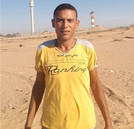
Saadi Akram Moamer, 26
Israeli forces opened fire on protests in the Gaza Strip on Friday, killing at least two Palestinians and injuring dozens more.
Gaza's Ministry of Health said two Palestinians were killed and over 270 injured as Israeli soldiers opened fire on demonstrations calling for the right of return for Palestinian refugees.
The ministry named one man as Karim Abu Fatayer, 30, and said he was shot near the central Gaza Strip town of Bureij.
The second was named as Saadi Akram Moamer, 26, who was shot east of Rafah.
Over 40 Palestinians were injured by live fire.
At least 160 Palestinians have been killed since the Great Return March protests began on 30 March, with more than 17,500 injured.
More than 68 Palestinians injured by Israeli forces have required amputations of either lower or upper limbs since protests began.
Palestinians are calling to return to the homes their families were forced from in 1948, during the war surrounding the creation of Israel.
Protesters have also called for an end to the decade-long crippling blockade on the Palestinian enclave.
Israel says its use of live fire is necessary to defend its borders and stop infiltrations, but human rights groups accuse it of disproportionate force against unarmed protesters.
Gaza has been under an Israeli blockade for over a decade, with residents banned from leaving the besieged coastal enclave.
Israeli forces opened fire on protests in the Gaza Strip on Friday, killing at least two Palestinians and injuring dozens more.
Gaza's Ministry of Health said two Palestinians were killed and over 270 injured as Israeli soldiers opened fire on demonstrations calling for the right of return for Palestinian refugees.
The ministry named one man as Karim Abu Fatayer, 30, and said he was shot near the central Gaza Strip town of Bureij.
The second was named as Saadi Akram Moamer, 26, who was shot east of Rafah.
Over 40 Palestinians were injured by live fire.
At least 160 Palestinians have been killed since the Great Return March protests began on 30 March, with more than 17,500 injured.
More than 68 Palestinians injured by Israeli forces have required amputations of either lower or upper limbs since protests began.
Palestinians are calling to return to the homes their families were forced from in 1948, during the war surrounding the creation of Israel.
Protesters have also called for an end to the decade-long crippling blockade on the Palestinian enclave.
Israel says its use of live fire is necessary to defend its borders and stop infiltrations, but human rights groups accuse it of disproportionate force against unarmed protesters.
Gaza has been under an Israeli blockade for over a decade, with residents banned from leaving the besieged coastal enclave.
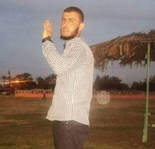
Karim Abul-Fatayer, 30
At least one Palestinian man was killed and 156 others injured, by live bullets or sustained suffocation from teargas inhalation, on Friday, as Israeli forces continued to crack down on the Great March of Return protests at Gaza-Israel border, according to the Ministry of Health. video
The forces fired live bullets and rubber-coated steel rounds at the protesters who gathered at many encampments along the border, killing Karim Abul-Fatayer, 30, and injuring 156 other protesters, WAFA reported.
More than 169 Palestinians have been killed and 17,500 others injured since the outbreak of the Gaza border protests on March 30. The protests call for ending the 12-year-long Israeli blockade of Gaza and for the right of return of the refugees.
Most of the casualties occurred on May 14, when Israeli forces attacked Palestinian protesters marking the 70th anniversary of Israel’s occupation of historical Palestine and the ensuing ethnic cleansing of half a million Palestinian refugees. video
At least one Palestinian man was killed and 156 others injured, by live bullets or sustained suffocation from teargas inhalation, on Friday, as Israeli forces continued to crack down on the Great March of Return protests at Gaza-Israel border, according to the Ministry of Health. video
The forces fired live bullets and rubber-coated steel rounds at the protesters who gathered at many encampments along the border, killing Karim Abul-Fatayer, 30, and injuring 156 other protesters, WAFA reported.
More than 169 Palestinians have been killed and 17,500 others injured since the outbreak of the Gaza border protests on March 30. The protests call for ending the 12-year-long Israeli blockade of Gaza and for the right of return of the refugees.
Most of the casualties occurred on May 14, when Israeli forces attacked Palestinian protesters marking the 70th anniversary of Israel’s occupation of historical Palestine and the ensuing ethnic cleansing of half a million Palestinian refugees. video
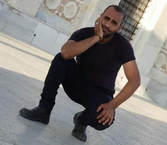
Ahmad Muhammad Mahameed, 30
An Israeli soldier was injured Friday in an anti-occupation stabbing attack in the Old City of Occupied Jerusalem. video video
The PIC reporter said that an Israeli soldier suffered several wounds after being stabbed by a Palestinian youth at al-Majlis Gate near al-Aqsa Mosque.
The Israeli police announced that the Palestinian youth was shot and killed by their forces for "deliberately" attempting to kill an Israeli soldier.
Local sources reported that the Israeli police closed all entrances to the Old City and some of al-Aqsa gates, installed military checkpoints, and summoned more police officers in the area.
Palestinian Killed After Attempted Stabbing of Israeli Police Officer
Local sources in Jerusalem and Israeli sources reported Friday afternoon that a Palestinian was shot dead in occupied Jerusalem, after attempting to stab an Israeli police officer.
The Palestinian man, from the town of Umm al-Fahm in Israel, was shot and killed by Israeli police after attempting to stab an Israeli police officer in the Old City of Jerusalem, near the Damascus Gate.
Israeli police released a video showing the street from above, with people walking, then a young man pulling out a knife and trying to stab an Israeli police officer, with the officer then moving backward behind a barricade. But the released video cuts off at that point, and does not show the officers shooting the man.
No Israelis were hurt in the incident.
Ahmad Mahameed, 30, was identified by Israeli police as the man who was killed. He had never been arrested by Israeli authorities before, nor was he on any ‘wanted’ list of suspects.
The Israeli media alleges that Mahameed left the Council Gate at the al-Aqsa Mosque at about 5:30pm. He then turned toward a group of policemen stationed a few meters away, and tried to stab one of them with the knife he was holding.
Mahameed’s hometown, Umm al-Fahm, is one of the few Palestinian towns that survived the expulsion of Palestinians in 1948 for the creation of the state of Israel. It is now home to 60,000 residents, all Palestinians. Israeli authorities have failed to provide adequate, electric, plumbing or sewage facilities to the town, and frequently deny requests from the town’s council for basic services. Though the town is located near Jenin, and has an historic relationship with the city, it has been cut off from all access to Jenin since the construction of the Israeli Annexation Wall in 2003.
Following the incident, Israeli police and military cordoned off a large area of the Old City of Jerusalem, including the al-Aqsa Mosque, and prevented Palestinians from entering for evening prayers. They also forced all worshipers who were in the mosque to leave.
In addition, the Israeli army invaded Mahameed’s town, Umm al-Fahm, closed the entrances to the town and ransacked his family home, taking several members of his family into custody for interrogation.
The commander of the Jerusalem District, Major General Yoram Halevy, told media that he deployed troops throughout the area, interrogating multiple suspects in the area of the Mosque, and removing the public from the scene.
The Palestinians responded to the decision to close the Al-Aqsa Mosque by calling for evening prayers outside at the door to the mosque. Hundreds of Jerusalemites gathered and recited the Maghrib and ‘Isha’ prayers at the doors of the mosque and demanded that it be reopened.
Worshipers said that they will continue their prayer protest until the reopening of Al-Aqsa Mosque
An Israeli soldier was injured Friday in an anti-occupation stabbing attack in the Old City of Occupied Jerusalem. video video
The PIC reporter said that an Israeli soldier suffered several wounds after being stabbed by a Palestinian youth at al-Majlis Gate near al-Aqsa Mosque.
The Israeli police announced that the Palestinian youth was shot and killed by their forces for "deliberately" attempting to kill an Israeli soldier.
Local sources reported that the Israeli police closed all entrances to the Old City and some of al-Aqsa gates, installed military checkpoints, and summoned more police officers in the area.
Palestinian Killed After Attempted Stabbing of Israeli Police Officer
Local sources in Jerusalem and Israeli sources reported Friday afternoon that a Palestinian was shot dead in occupied Jerusalem, after attempting to stab an Israeli police officer.
The Palestinian man, from the town of Umm al-Fahm in Israel, was shot and killed by Israeli police after attempting to stab an Israeli police officer in the Old City of Jerusalem, near the Damascus Gate.
Israeli police released a video showing the street from above, with people walking, then a young man pulling out a knife and trying to stab an Israeli police officer, with the officer then moving backward behind a barricade. But the released video cuts off at that point, and does not show the officers shooting the man.
No Israelis were hurt in the incident.
Ahmad Mahameed, 30, was identified by Israeli police as the man who was killed. He had never been arrested by Israeli authorities before, nor was he on any ‘wanted’ list of suspects.
The Israeli media alleges that Mahameed left the Council Gate at the al-Aqsa Mosque at about 5:30pm. He then turned toward a group of policemen stationed a few meters away, and tried to stab one of them with the knife he was holding.
Mahameed’s hometown, Umm al-Fahm, is one of the few Palestinian towns that survived the expulsion of Palestinians in 1948 for the creation of the state of Israel. It is now home to 60,000 residents, all Palestinians. Israeli authorities have failed to provide adequate, electric, plumbing or sewage facilities to the town, and frequently deny requests from the town’s council for basic services. Though the town is located near Jenin, and has an historic relationship with the city, it has been cut off from all access to Jenin since the construction of the Israeli Annexation Wall in 2003.
Following the incident, Israeli police and military cordoned off a large area of the Old City of Jerusalem, including the al-Aqsa Mosque, and prevented Palestinians from entering for evening prayers. They also forced all worshipers who were in the mosque to leave.
In addition, the Israeli army invaded Mahameed’s town, Umm al-Fahm, closed the entrances to the town and ransacked his family home, taking several members of his family into custody for interrogation.
The commander of the Jerusalem District, Major General Yoram Halevy, told media that he deployed troops throughout the area, interrogating multiple suspects in the area of the Mosque, and removing the public from the scene.
The Palestinians responded to the decision to close the Al-Aqsa Mosque by calling for evening prayers outside at the door to the mosque. Hundreds of Jerusalemites gathered and recited the Maghrib and ‘Isha’ prayers at the doors of the mosque and demanded that it be reopened.
Worshipers said that they will continue their prayer protest until the reopening of Al-Aqsa Mosque
13 aug 2018
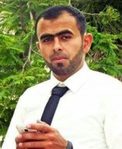
Wisam Yousef Hijazi, 30
Palestinian Medical sources in the Gaza Strip have reported that a seriously injured young man has died from his wounds, on Sunday at night.
The sources said that Wisam Yousef Hijazi, 30, was shot by Israeli army fire on May 14th, during the Great Return March procession, east of Abasan al-Jadeeda town, east of Khan Younis, in the southern part of the Gaza Strip.
Hijazi remained in a critical condition due to his injury, and was referred to an Egyptian hospital, but succumbed to his wounds at Rafah Border Terminal, between Gaza and Egypt.
Wisam was from Bani Sohelia town, east of Khan Younis.
According to data from the United Nations Office for the Coordination of Humanitarian Affairs in the Occupied Palestinian Territory (OCHA), published on August 9th 2018, 172 Palestinians; including 140 men, 2 women, 28 boys (children) and 2 girls (children), have been killed in the Gaza Strip since March 30th
It said that the soldiers have injured 17.504 Palestinians, including 9227 who were hospitalized, and 8277 who were treated in field clinics.
According to OCHA, the fatalities include 124 Palestinians who were killed during the protests, and 48 killed in “other
circumstances”; among the latter are seven people whose bodies are reportedly being withheld by the Israeli authorities.
However, on Saturday, August 11th, (prior to Hijazi’s death), Dr. Ashraf al-Qedra, the Head of the Public Relations Department on Gaza’s Health Ministry, has reported that the soldiers have killed 167 Palestinians, including three medics, during the Great Return March Procession, since it started on March 30th, 2018.
He added that the soldiers have injured approximately 18.000 Palestinians, including 370 medics, and caused damage to 70 ambulances, since March 30th.
Palestinian Medical sources in the Gaza Strip have reported that a seriously injured young man has died from his wounds, on Sunday at night.
The sources said that Wisam Yousef Hijazi, 30, was shot by Israeli army fire on May 14th, during the Great Return March procession, east of Abasan al-Jadeeda town, east of Khan Younis, in the southern part of the Gaza Strip.
Hijazi remained in a critical condition due to his injury, and was referred to an Egyptian hospital, but succumbed to his wounds at Rafah Border Terminal, between Gaza and Egypt.
Wisam was from Bani Sohelia town, east of Khan Younis.
According to data from the United Nations Office for the Coordination of Humanitarian Affairs in the Occupied Palestinian Territory (OCHA), published on August 9th 2018, 172 Palestinians; including 140 men, 2 women, 28 boys (children) and 2 girls (children), have been killed in the Gaza Strip since March 30th
It said that the soldiers have injured 17.504 Palestinians, including 9227 who were hospitalized, and 8277 who were treated in field clinics.
According to OCHA, the fatalities include 124 Palestinians who were killed during the protests, and 48 killed in “other
circumstances”; among the latter are seven people whose bodies are reportedly being withheld by the Israeli authorities.
However, on Saturday, August 11th, (prior to Hijazi’s death), Dr. Ashraf al-Qedra, the Head of the Public Relations Department on Gaza’s Health Ministry, has reported that the soldiers have killed 167 Palestinians, including three medics, during the Great Return March Procession, since it started on March 30th, 2018.
He added that the soldiers have injured approximately 18.000 Palestinians, including 370 medics, and caused damage to 70 ambulances, since March 30th.
11 aug 2018

The Palestinian Ministry of Health in Gaza released a report on Saturday showing new statistics regarding the number of Palestinians killed and injured since the start of "The Great March of Return" protests in the besieged Gaza Strip.
The report showed that Israeli forces shot and killed a total of 167 Palestinians and injured over 18,000 others since the start of "The Great March of Return" protests on March 30th.
The new statistics come after three Palestinians were killed with live bullets fired by Israeli forces on Friday during the 20th "Great March of Return" protests in Gaza.
The ministry confirmed that a paramedic was one of the three killed Palestinians which raised the total number of medics that have been killed by Israeli forces to three.
The report added that 370 paramedics were injured.
Several injured Palestinians were in critical condition, while many others suffered from tear gas inhalation.
Additionally, a total of about 70 ambulances were damaged.
The report released by the ministry clearly showed that Israeli forces intentionally targeted Palestinians on Friday with the intention to kill since the injuries were caused by various types of live ammunition and were aimed at specific parts of the body.
Twenty-eight children were among the 307 Palestinians injured during the Friday protests, five were medics, and two were journalists.
Over the past four months of the on-going Gaza protests, human rights organizations have come out in full condemnation of Israel's violent response to massive unarmed civilian protests.
Adalah, the Legal Center for Arab Minority Rights, released a statement condemning Israel's use of military snipers against the civilian protesters.
Adalah said that "the Israeli military's use of 100 snipers against unarmed Palestinian civilian protesters in the Gaza Strip is illegal," the statement said, adding "live gunfire on unarmed civilians constitutes a brutal violation of the international legal obligation to distinguish between civilians and combatants."
B'Tselem, an Israeli human rights organization, stressed that "fragments of information reported by the media indicate that: soldiers will be ordered to shoot anyone coming within 300 meters of the fence; snipers will fire at anyone touching it; live fire will be used also in circumstances which are non-life-threatening. In other words: shoot-to-kill unarmed Palestinians taking part in these demonstrations."
The report showed that Israeli forces shot and killed a total of 167 Palestinians and injured over 18,000 others since the start of "The Great March of Return" protests on March 30th.
The new statistics come after three Palestinians were killed with live bullets fired by Israeli forces on Friday during the 20th "Great March of Return" protests in Gaza.
The ministry confirmed that a paramedic was one of the three killed Palestinians which raised the total number of medics that have been killed by Israeli forces to three.
The report added that 370 paramedics were injured.
Several injured Palestinians were in critical condition, while many others suffered from tear gas inhalation.
Additionally, a total of about 70 ambulances were damaged.
The report released by the ministry clearly showed that Israeli forces intentionally targeted Palestinians on Friday with the intention to kill since the injuries were caused by various types of live ammunition and were aimed at specific parts of the body.
Twenty-eight children were among the 307 Palestinians injured during the Friday protests, five were medics, and two were journalists.
Over the past four months of the on-going Gaza protests, human rights organizations have come out in full condemnation of Israel's violent response to massive unarmed civilian protests.
Adalah, the Legal Center for Arab Minority Rights, released a statement condemning Israel's use of military snipers against the civilian protesters.
Adalah said that "the Israeli military's use of 100 snipers against unarmed Palestinian civilian protesters in the Gaza Strip is illegal," the statement said, adding "live gunfire on unarmed civilians constitutes a brutal violation of the international legal obligation to distinguish between civilians and combatants."
B'Tselem, an Israeli human rights organization, stressed that "fragments of information reported by the media indicate that: soldiers will be ordered to shoot anyone coming within 300 meters of the fence; snipers will fire at anyone touching it; live fire will be used also in circumstances which are non-life-threatening. In other words: shoot-to-kill unarmed Palestinians taking part in these demonstrations."
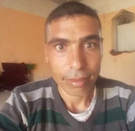
Ahmad Jamal Abu Loly 40
A Palestinian man, 40 died on Saturday morning of wounds he sustained on the previous day during Gaza border protests.
The martyr, identified as Ahmad Jamal Abu Loly, was shot and critically injured by Israeli forces on Friday while participating in the Great March of Return protests to the east of the city of Rafah, south of the Gaza Strip.
This brings the total number of those killed during the Friday protests to three, while 307 others were injured including five medics and two journalists.
A Palestinian man, 40 died on Saturday morning of wounds he sustained on the previous day during Gaza border protests.
The martyr, identified as Ahmad Jamal Abu Loly, was shot and critically injured by Israeli forces on Friday while participating in the Great March of Return protests to the east of the city of Rafah, south of the Gaza Strip.
This brings the total number of those killed during the Friday protests to three, while 307 others were injured including five medics and two journalists.
10 aug 2018
|
|
Abdullah al-Qotati medic
Ali Saeid al-Aloul 55 Israeli forces have opened fire on Palestinians taking part in a protest in the area between the occupied territories and the besieged Gaza Strip, leaving two people killed. The Gaza Health Ministry said Abdullah al-Qotati, a young medic, was killed by Israeli fire east of the city of Khan Yunis in the southern part of the Gaza Strip on Friday. video The spokesmen for the ministry, Ashraf al-Qidra, added that Israeli forces also killed 55-year-old Ali Saeid al-Aloul east of the city of Rafah in southern Gaza. |
According to the ministry, at least 170 Palestinians, including medics and journalists, were also injured during the protest.
Tensions have been running high near the fence since March 30, which marked the start of a series of protests dubbed “The Great March of Return.” Palestinian protesters demand the right to return for those driven out of their homeland.
The clashes in Gaza reached their peak on May 14, the eve of the 70th anniversary of Nakba Day, or the Day of Catastrophe, which coincided this year with Washington's relocation of the US embassy from Tel Aviv to occupied Jerusalem al-Quds.
Israeli fire has taken the lives of nearly 160 Palestinians since March 30. Nearly 15,000 Palestinians have also sustained injuries, of whom at least 360 are reportedly in critical condition.
On June 13, the United Nations General Assembly adopted a resolution, sponsored by Turkey and Algeria, condemning Israel for Palestinian civilian deaths in the Gaza Strip.
Gaza has been under Israeli siege since June 2007, causing a decline in living standards as well as unprecedented unemployment and poverty.
Israel has also launched several wars on the Palestinian sliver, the last of which began in early July 2014 and ended in late August the same year. The Israeli military aggression killed nearly 2,200 Palestinians and injured over 11,100 others.
On Thursday, Israeli aircraft bombed a multi-story building in Gaza City amid threats of another full-scale military offensive against the besieged coastal enclave.
Tensions have been running high near the fence since March 30, which marked the start of a series of protests dubbed “The Great March of Return.” Palestinian protesters demand the right to return for those driven out of their homeland.
The clashes in Gaza reached their peak on May 14, the eve of the 70th anniversary of Nakba Day, or the Day of Catastrophe, which coincided this year with Washington's relocation of the US embassy from Tel Aviv to occupied Jerusalem al-Quds.
Israeli fire has taken the lives of nearly 160 Palestinians since March 30. Nearly 15,000 Palestinians have also sustained injuries, of whom at least 360 are reportedly in critical condition.
On June 13, the United Nations General Assembly adopted a resolution, sponsored by Turkey and Algeria, condemning Israel for Palestinian civilian deaths in the Gaza Strip.
Gaza has been under Israeli siege since June 2007, causing a decline in living standards as well as unprecedented unemployment and poverty.
Israel has also launched several wars on the Palestinian sliver, the last of which began in early July 2014 and ended in late August the same year. The Israeli military aggression killed nearly 2,200 Palestinians and injured over 11,100 others.
On Thursday, Israeli aircraft bombed a multi-story building in Gaza City amid threats of another full-scale military offensive against the besieged coastal enclave.
9 aug 2018

Enas Mohammad Abu Khammash, 23, Bayan Abu Khammash, 18 months
The Palestinian Health Ministry has confirmed that Israeli army missiles have killed a pregnant Palestinian mother, and her infant daughter, 18 months of age, in central Gaza. The mother was nine months pregnant.
Dr. Ashraf al-Qedra, the spokesperson of the Health Ministry in Gaza, has confirmed that the soldiers killed a pregnant
The Palestinian Health Ministry has confirmed that Israeli army missiles have killed a pregnant Palestinian mother, and her infant daughter, 18 months of age, in central Gaza. The mother was nine months pregnant.
Dr. Ashraf al-Qedra, the spokesperson of the Health Ministry in Gaza, has confirmed that the soldiers killed a pregnant
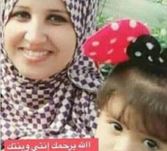
woman, identified as Enas Mohammad Abu Khammash, 23, and her child Bayan Abu Khammash, 18 months, in their home in al-Ja’farawi area, in Gaza’s Central District. video
He added that the bombardment also caused moderate wounds to Enas’s husband, Mohammad Khammash.
Furthermore, the soldiers injured at least twelve Palestinians in ongoing Israeli bombardment of several parts of the Gaza Strip, and earlier killed one Palestinian, identified as Ali al-Ghandour, 30.
In addition, the Israeli Air Force fired three missiles at a concrete factory, and three other missiles into a nearby area, northwest of Gaza city.
Media sources in Gaza said Israeli missiles also struck sites, run by armed resistance groups, in Rafah, in the southern part of the Gaza Strip, while more missiles were fired from drones into sites in the Sudaniyya area, northwest of Gaza city, and Beit Lahia, in northern Gaza.
Also on Wednesday, the army fired several missiles into various areas of the Gaza Strip, including a building in the Sudaniyya area of northern Gaza, which was first struck by three missiles, followed by an additional six missiles, just minutes later.
The Israeli army said it targeted several Hamas centers in Gaza, reportedly when six Israelis were injured in the Sderot settlement, in the Negev, “after eight shells were fired from Gaza”.
Israeli Ynet News said that one Israeli man, aged 23, was injured by shrapnel in his leg, and added that “two pregnant women in addition to a man, 42 years of age, were treated for shock,” before being moved to Barzilai Hospital.
It alleged that Hamas fighters fired live rounds at “civil engineering equipment”, used as part of a “anti-tunnel barrier’” which is being built along the barrier with Gaza, causing damage, before the army fire a tank shell at a Hamas post.
Hamas said its fighters fired shells into nearby army posts, in retaliation to Israeli bombardment of the coastal region, and added that it has no Interest in escalation.
Hamas leaders said that they are holding talks with Egypt, to restore calm to the region, and to avoid a potentially serious military escalation.
For its part, the Israeli army said it raised the alert level along the border with Gaza, after noticing that Hamas fighters were evacuated from their posts along the border, a move that Hamas said was meant to ensure their safety, and avoid further escalation, while the army considered it as part of preparation for potential escalation.
On Tuesday, the Israeli army killed two Hamas fighters, identified as Ahmad Abdullah Morjan, 23, and Abdul-Hafeth Mohammad Seelawi, 23, in northern Gaza.
The Al-Qassam Brigades, the armed wing of Hamas, issued a statement denouncing the Israeli assassination of two of its fighters, in northern Gaza, and holding Israel accountable for any future escalation.
It stated that the two fighters were part of a military training in “Asqalan” center, one of its training locations in northern Gaza, and that many Palestinians, including political leaders of Hamas, were in attendance.
He added that the bombardment also caused moderate wounds to Enas’s husband, Mohammad Khammash.
Furthermore, the soldiers injured at least twelve Palestinians in ongoing Israeli bombardment of several parts of the Gaza Strip, and earlier killed one Palestinian, identified as Ali al-Ghandour, 30.
In addition, the Israeli Air Force fired three missiles at a concrete factory, and three other missiles into a nearby area, northwest of Gaza city.
Media sources in Gaza said Israeli missiles also struck sites, run by armed resistance groups, in Rafah, in the southern part of the Gaza Strip, while more missiles were fired from drones into sites in the Sudaniyya area, northwest of Gaza city, and Beit Lahia, in northern Gaza.
Also on Wednesday, the army fired several missiles into various areas of the Gaza Strip, including a building in the Sudaniyya area of northern Gaza, which was first struck by three missiles, followed by an additional six missiles, just minutes later.
The Israeli army said it targeted several Hamas centers in Gaza, reportedly when six Israelis were injured in the Sderot settlement, in the Negev, “after eight shells were fired from Gaza”.
Israeli Ynet News said that one Israeli man, aged 23, was injured by shrapnel in his leg, and added that “two pregnant women in addition to a man, 42 years of age, were treated for shock,” before being moved to Barzilai Hospital.
It alleged that Hamas fighters fired live rounds at “civil engineering equipment”, used as part of a “anti-tunnel barrier’” which is being built along the barrier with Gaza, causing damage, before the army fire a tank shell at a Hamas post.
Hamas said its fighters fired shells into nearby army posts, in retaliation to Israeli bombardment of the coastal region, and added that it has no Interest in escalation.
Hamas leaders said that they are holding talks with Egypt, to restore calm to the region, and to avoid a potentially serious military escalation.
For its part, the Israeli army said it raised the alert level along the border with Gaza, after noticing that Hamas fighters were evacuated from their posts along the border, a move that Hamas said was meant to ensure their safety, and avoid further escalation, while the army considered it as part of preparation for potential escalation.
On Tuesday, the Israeli army killed two Hamas fighters, identified as Ahmad Abdullah Morjan, 23, and Abdul-Hafeth Mohammad Seelawi, 23, in northern Gaza.
The Al-Qassam Brigades, the armed wing of Hamas, issued a statement denouncing the Israeli assassination of two of its fighters, in northern Gaza, and holding Israel accountable for any future escalation.
It stated that the two fighters were part of a military training in “Asqalan” center, one of its training locations in northern Gaza, and that many Palestinians, including political leaders of Hamas, were in attendance.
